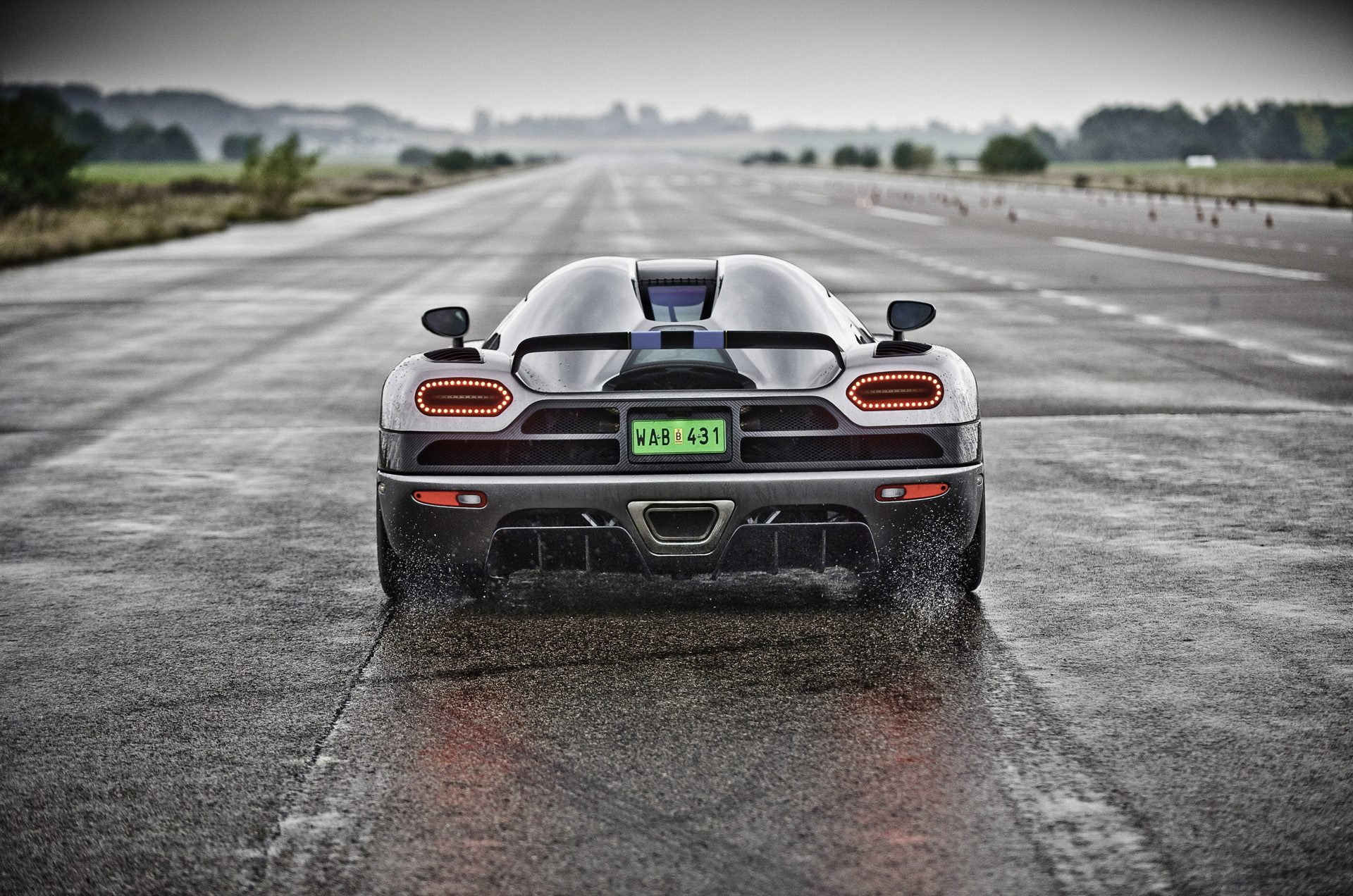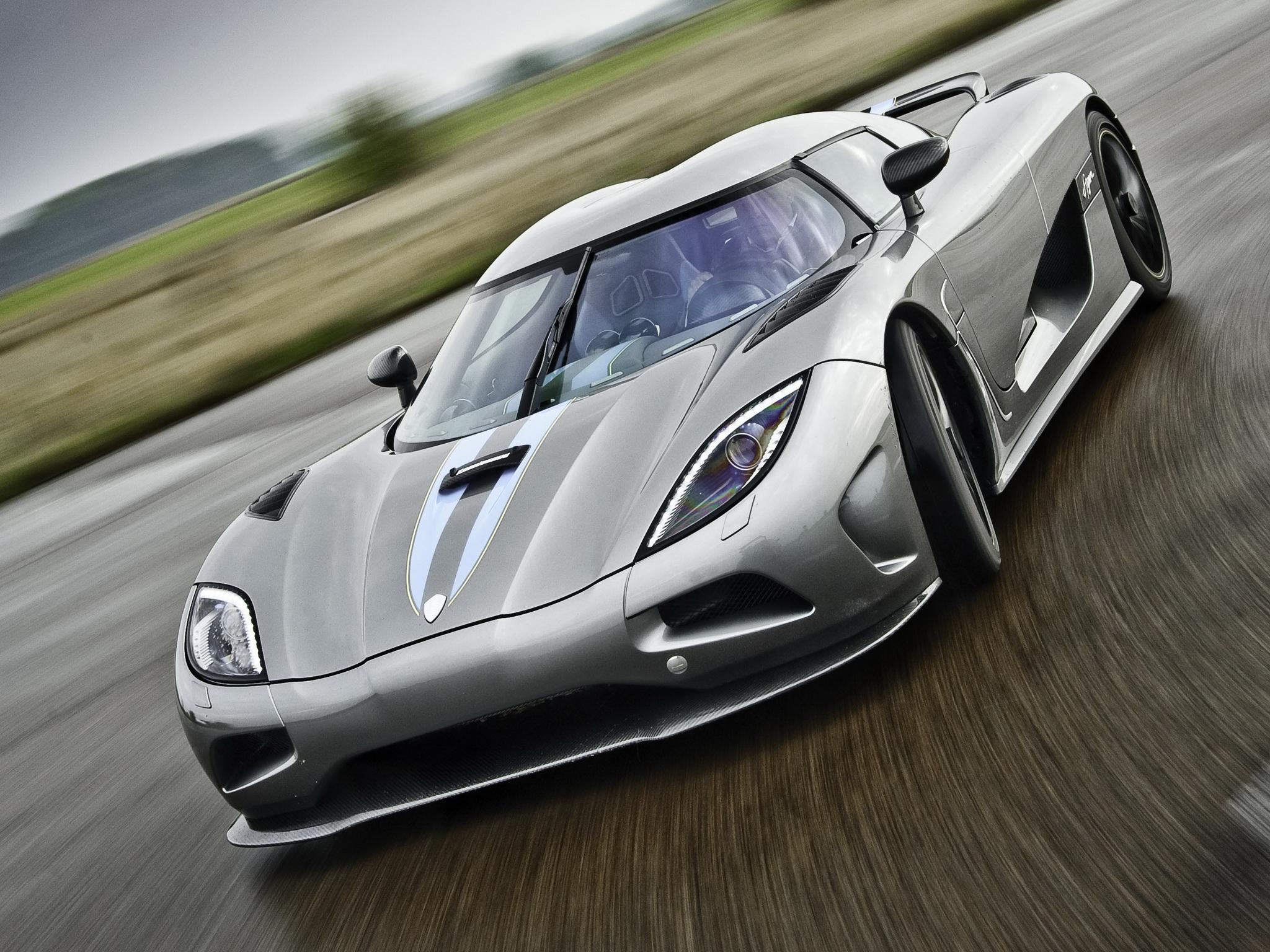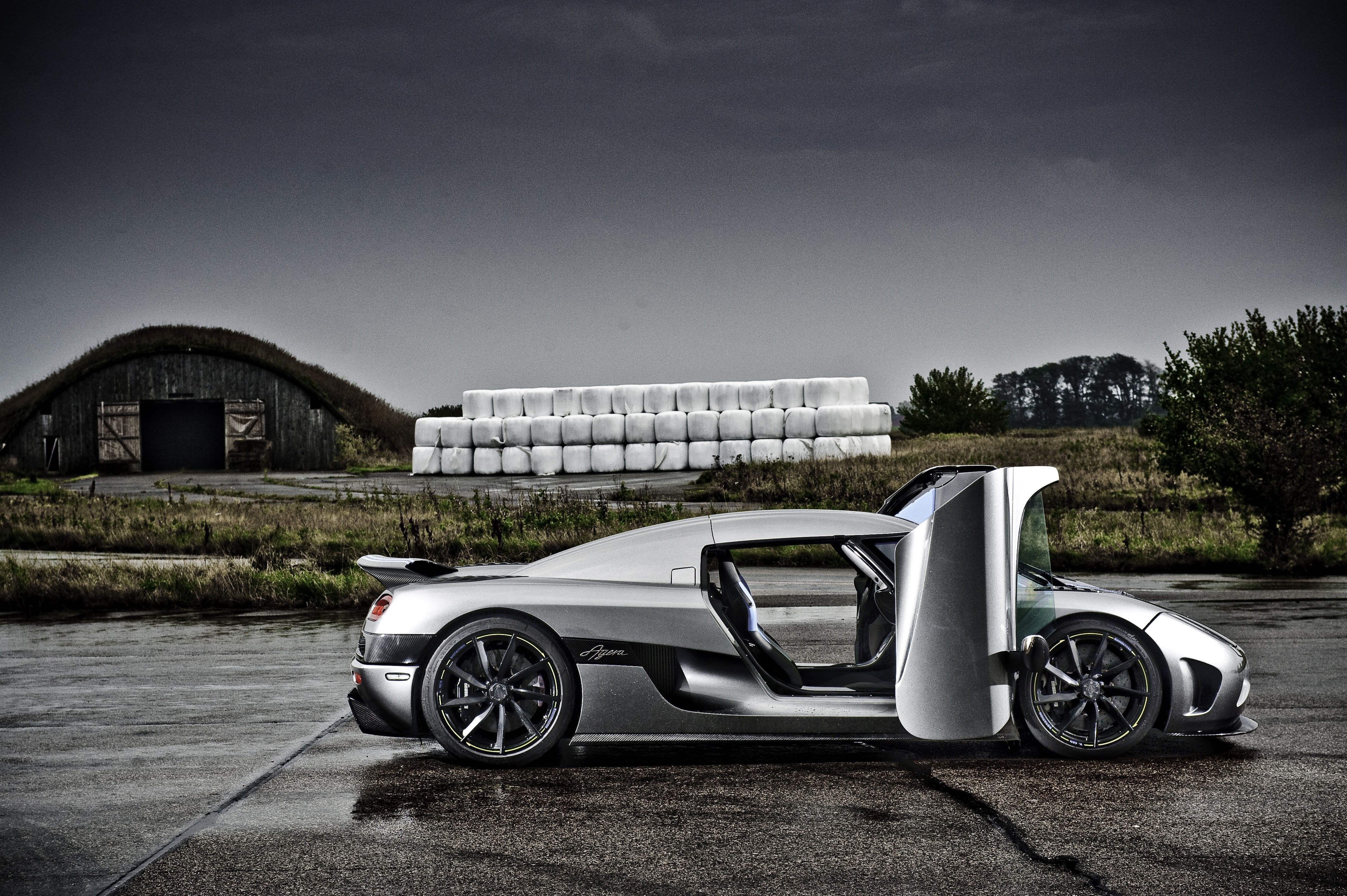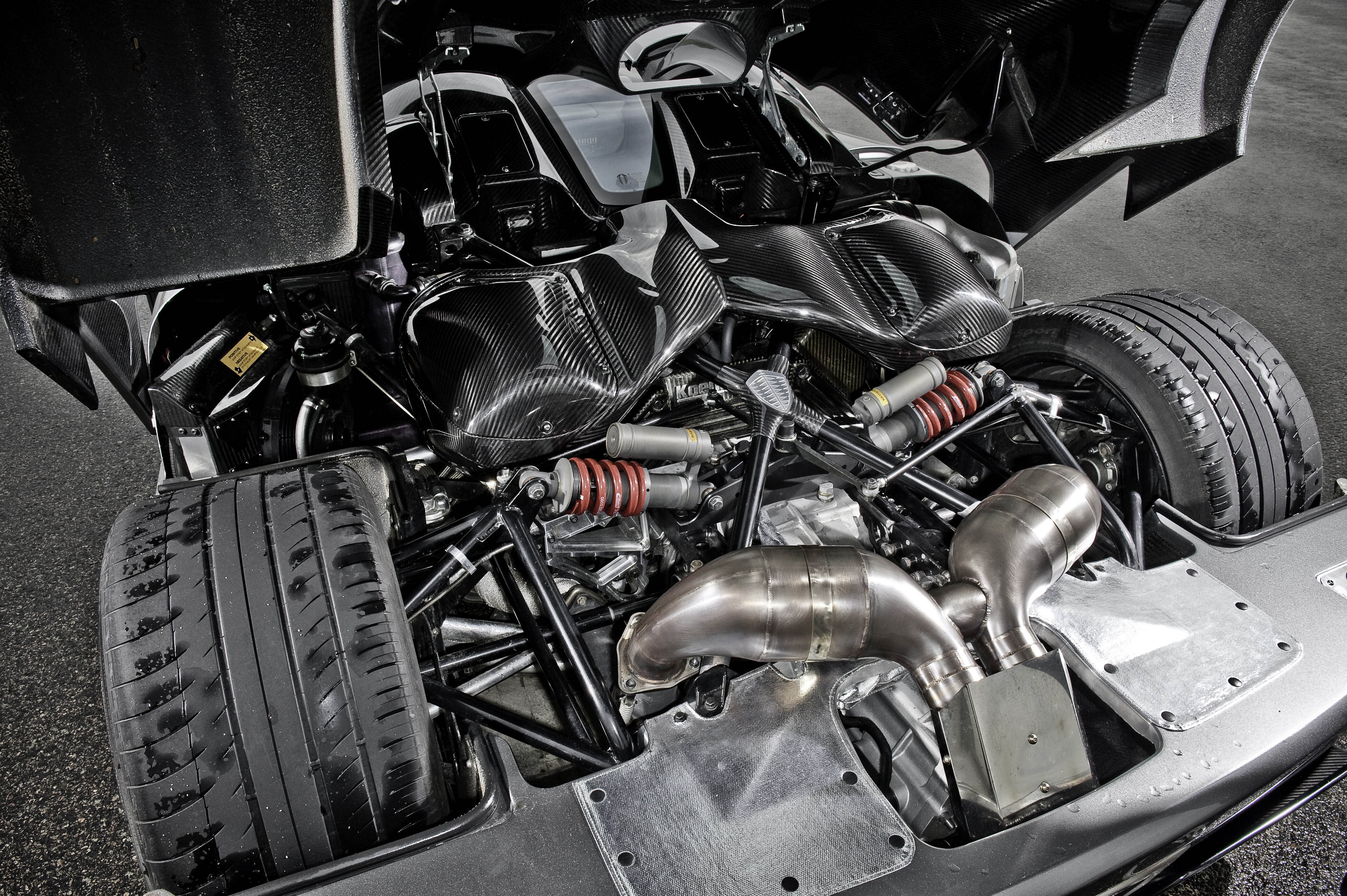
TIME TO TAKE ACTION
Agera means “to take action” in Swedish. It is also short for the ancient Greek word Ageratos which means “ageless”. These are both suitable meanings for this incredible and beautiful machine.
The CCX and CCXR were difficult cars to follow as their performance and functionality still is very competitive. Still, there is always room for change and improvement.
So Koenigsegg came up with a new interior, featuring the now famous ghost lights, where all interior symbols are created with laser etched “nano like” invisible holes through the aluminum panels and buttons.
Furthermore, the Agera featured a unique 7 speed transmission that Koenigsegg developed an E-diff and wet clutch functionality for, that truly enhanced performance and handling.
The Agera was the first model to feature the Koenigsegg developed VGR wheels. They are real air turbines, increasing the downforce of the car by measurable amounts and improving brake cooling. All four wheels are individual so that turbine blades always face the correct direction for extraction. Given that the offset and width is different front to rear, all four wheels have their own unique design. The VGR wheels are forged and then fully machined to the final shape. All excess material is removed during the forging and machining process, thus minimizing weight whilst displaying outstanding levels of stiffness.
The CCX and CCXR both had supercharged engines, which at the time was the superior solution. However, turbo technology had come a long way and the downsides of turbo lag was starting to become almost nonexistent, if engineered properly. The problem with turbo engines, high power and emission control was that the catalytic converters caused a lot of back pressure at high power level. These back pressures were elevated through the turbo and into the exhaust ports of the engine, thereby causing what is called hot EGR. Hot EGR is a source for detonation knocking. To eleviate this problem, Christian came up with an ingenious solution by placing the pre cat behind the waste gate instead of the turbo, thereby reducing the back pressure with a factor of 3. This simple solution gave 300 hp extra power and was a worthy successor of the Rocket cat invented and developed by Christian almost 10 years earlier. It also meant that the Agera could deliver torque power and response to match much larger engines at a fraction of their weight, making it extremely competitive.
The Agera Became the 2010 Top Gear Hypercar of the Year.
SPECIFICATION
PERFORMANCE
- Power output: 960 hp at 7100 rpm – redline @ 7500 rpm
- Torque: over 1000 Nm from 2700 to 6170 rpm
- Max torque: 1100 Nm at 4000 rpm
- Acceleration: 0-100 km/h (0-62 mph) 3 seconds,
- 0-200 km/h 8.0 sec, 0-200-0 km/h 13.5 sec
- Braking distance: 30.5m (100-0 km/h)
- Lateral g-force: 1.5 g
- Fuel consumption: Highway travel: 12,5 l/100km, Combined: 14,7/100km
- Weight-to-power ratio: 1.41 kg/hp (dry weight)
- Weight distribution: 44% front, 56% rear
- Emission levels: Euro V and lev 2
- Carbon fibre with aluminium honeycomb and integrated fuel tanks for optimal weight distribution and safety.
- Monocoque torsional rigidity: 65,000 Nm/degree
- Weight including tanks: 70 kg
- Front and rear suspension: Double wishbones, two-way adjustable VPS gas-hydraulic shock absorbers, pushrod operated.
- Electronically adjustable ride height.
- Front: Cro-Mo subframe, with integrated crash members
- Rear: Semi-stressed engine and gearbox with support struts, for needle bearings and o-ringed wishbone bushings optimal rigidity and no engine inertia movements.
- Fully machined aircraft aluminium uprights, with SKF LeMans specification 150mm angle contact ball bearings.
- GKN hollow/gun-drilled driveshafts
- Koenigsegg Z-style progressive and lightweight anti-roll bars front and rear.
- Specially developed 7-speed dual clutch, 1 input shaft transmission with paddle-shift.
- Electronic differential
- Front brakes: Ventilated ceramic discs Ø 392 mm, 36 mm wide.
- 6-piston calipers. Power-assisted.
- Rear brakes: Ventilated ceramic discs Ø 380 mm, 34 mm wide.
- 4-piston callipers. Power-assisted.
- Koenigsegg forged Vortex generating aluminium wheels with centre locking
- Front: 19″ x 9.5″
- Rear: 20″ x 12.5″
- Two-door, two seater with removable hardtop stowable under the front hood lid. Body made from pre-impregnated carbon fibre/kevlar and lightweight sandwich reinforcements. Carbon vents over wheels.
- Total length: 4293 mm (169″)
- Total width: 1996 mm (78.6″)
- Total height: 1120 mm (44.1″)
- Ground clearance: Rear: 100 mm (3.94″) Front: 100 mm (3.94″)
- Wheelbase: 2662 mm
- Front track: 1700 mm
- Rear track: 1650 mm
- Front overhang: 885 mm Rear overhang: 752 mm
- Fuel capacity: 80 litres
- Luggage compartment: 120 litres (31.7 US gallons)
- Dry weight: 1330 kg
- Curb weight: 1435 kg (all fluids plus 50% fuel)
- Maximum laden weight: 1650 kg (full tank, two passengers, full luggage)
- Cd. 0,33 to 0,37 with adaptable rear wing.
- Frontal Area: 1.873 m2
- Total Downforce at 250 km/h: 300 kg
- Flat underside of chassis
- Venturi tunnels at rear of chassis/body
- Koenigsegg aluminum 5,0L V8, 4 valves per cylinder, double overheadcamshafts
- Compression: 9.0:1
- Bore: 91.7 mm Stroke: 95.25 mm
- Sequential, multipoint fuel injection
- Twin turbo superchargers
- 1.3 bar boost pressure
- Dry sump lubrication
- Carbon fibre intake manifold with optimised intake tracts
- Tig-welded ceramic coated inconel exhaust system manifold with merge collector
- Weight: 197 kg
- Rack and pinion power assisted steering. 2.7 turns lock-to-lock.
- Turning circle: 11 meters. TRW electro-hydraulic power-assisted.
- F1-style for optimal performance with 5 different handling modes.
- KES (Koenigsegg Electronic Stability).
- Dedicated Michelin Supersport
- Unidirectional with asymmetric thread pattern
- Front: 265/35 – 19″ (Y)
- Rear: 345/30 – 20″ (Y)
- Speed rating: 420+ km/h
- Solid state digital semiconductors – no fuses or relays. Can bus operated and fully programmable functionality.
- Dual airbags, detachable storable hardtop with glass roof, power windows, rear wing, adjustable pedals and steering column, Agera stitching, adjustable seats in rake and length, carbon ceramic brakes with ABS, ESP, Intelligent LifePo4 battery, Inconel exhaust system hydraulic lifting system, power steering, power brakes, satnav, MP3 player, USB connection, climate control, digital warning and info system, G sensor, alarm, tyre monitoring system, silver key, leather carpets, roof storage bag, car cover.
- Fitted luggage, special leather and colour requests, F1 Double Wing, Front winglets, Triplex rear suspension, rear view camera, heated seats, ski box roof, skis, winter wheel package, 4-point racing harness.
- 3 Year unlimited mileage warranty.





